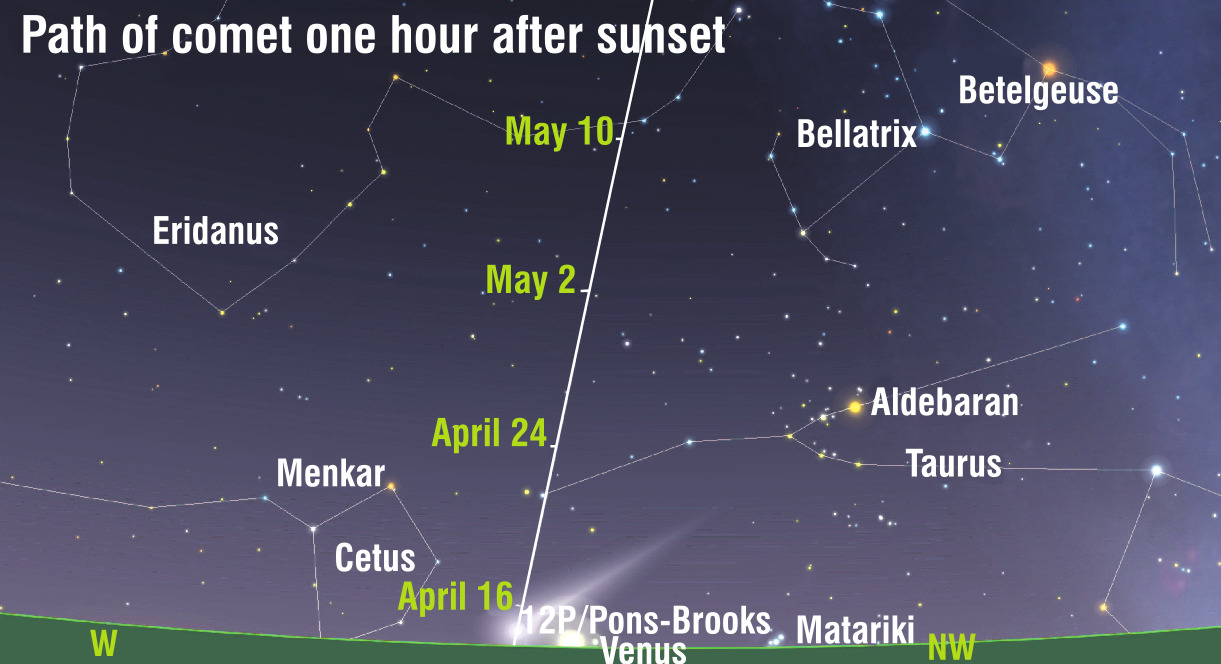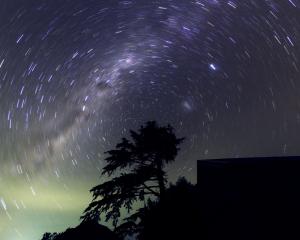
Since Levy personally discovered 22 comets, he was something of an expert on their capriciousness. You should keep this in mind when considering my excitement at potentially observing an exceptionally bright comet after sunset.
The comet is 12/P Pons-Brooks. Astronomers call it a "Halley-class" comet, which means that it makes regular and predictable returns like the very famous comet Halley. This comet has an orbital period of just over 71 years and reaches perihelion (its closest point to the sun) on April 21 when it will reach peak brightness.

Pons first identified this comet from the Marseilles observatory in July 1812. Brooks, second on the list of comet discoverers with 31 discoveries, identified the comet at its 1883 apparition. The last time the comet visited the inner solar system was in 1954, and if you do not see the comet in the next few weeks, you will have to wait until 2095!
Pons-Brooks has been invisible from this part of the world but has been putting on quite a show for northern hemisphere stargazers, undergoing several outbursts and dramatically increasing in brightness. In late March, the comet was visible to the naked eye, with a tail about the full moon’s diameter trailing behind it.
The comet is about to be visible here in the southern hemisphere. By the end of this week, the comet will be close to Venus in the sky and may be visible an hour after sunset for those with an unobstructed horizon.
Over the next few weeks, Pons-Brooks will climb higher in the sky after sunset. Unfortunately, the comet will fade as it moves away from the sun, and for the next couple of weeks, moonlight will interfere in the early part of the night, making the comet harder to find. However, by the end of the month, I’m hopeful that the comet will be a nice sight, at least in binoculars.










